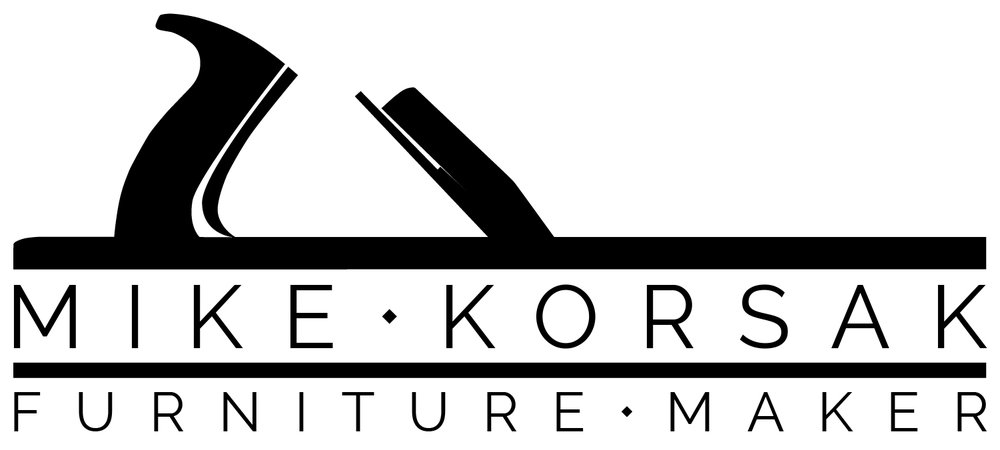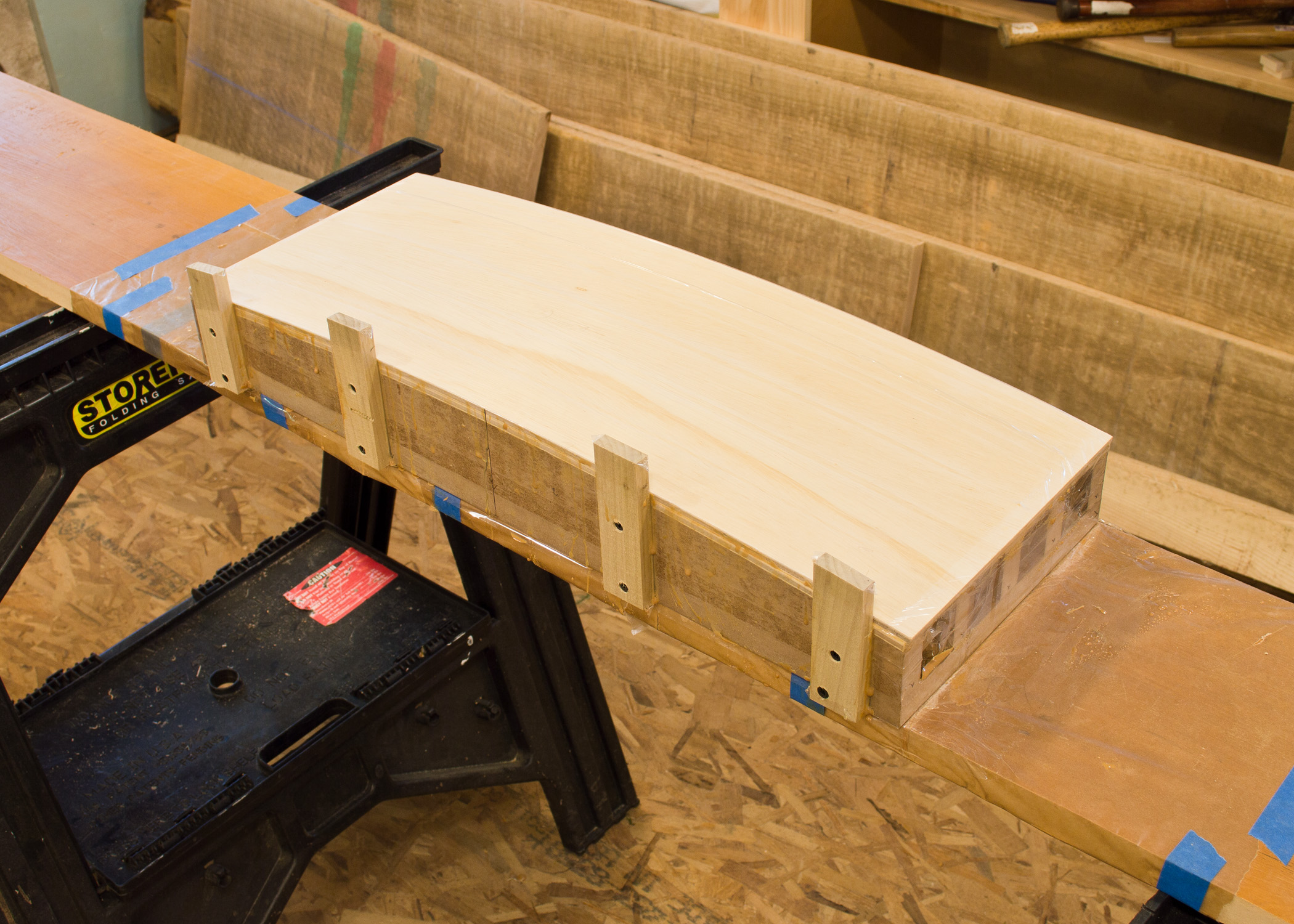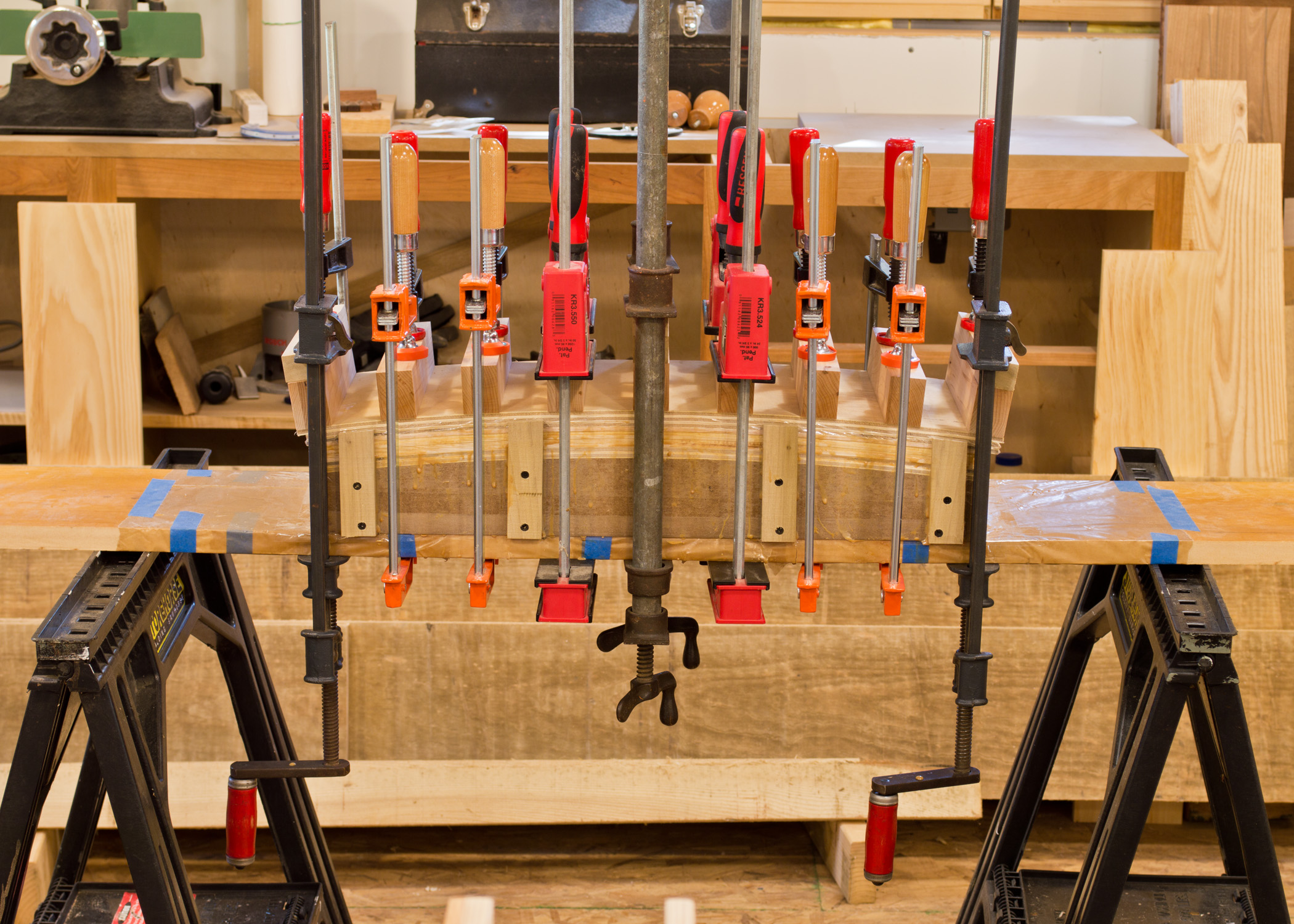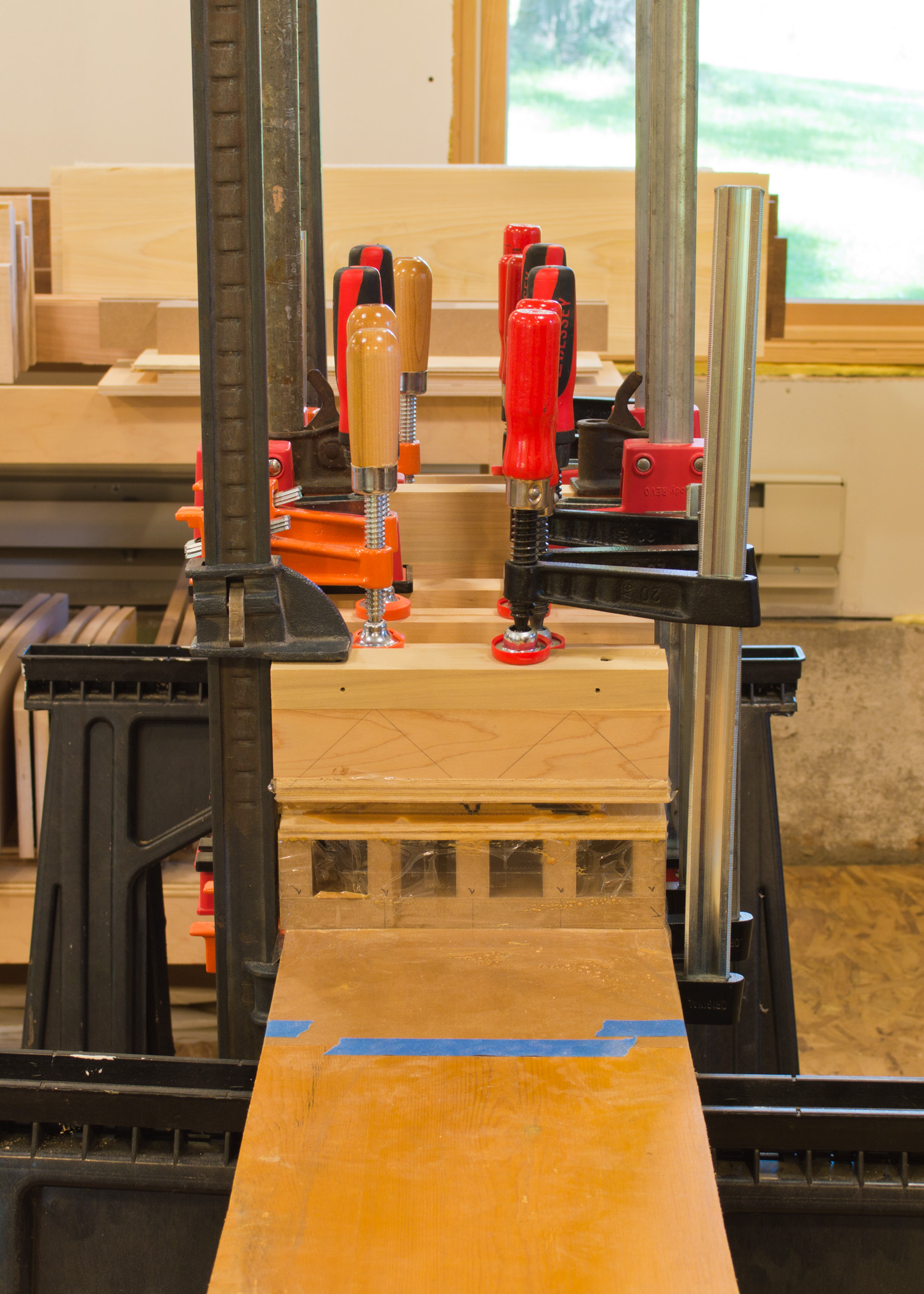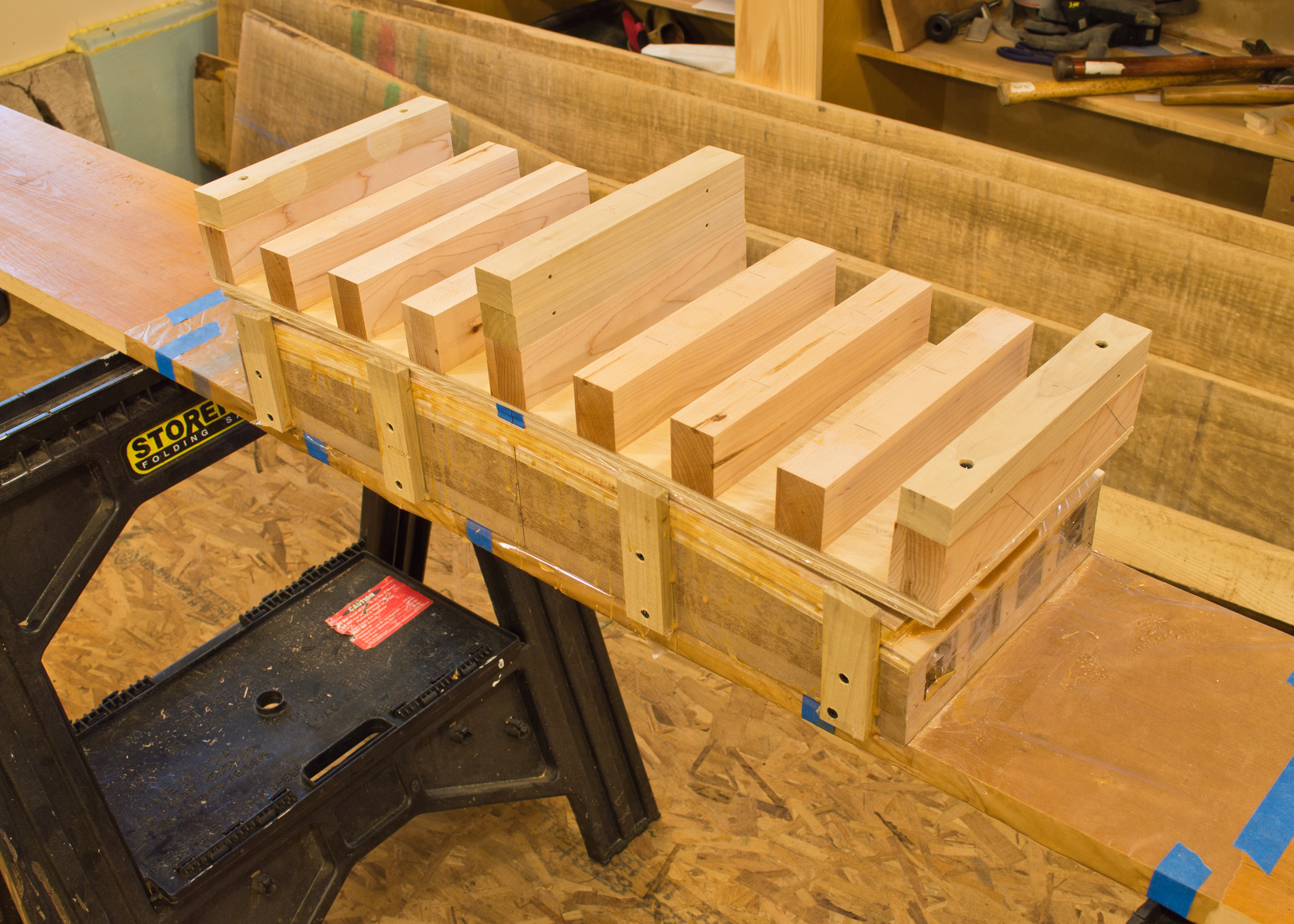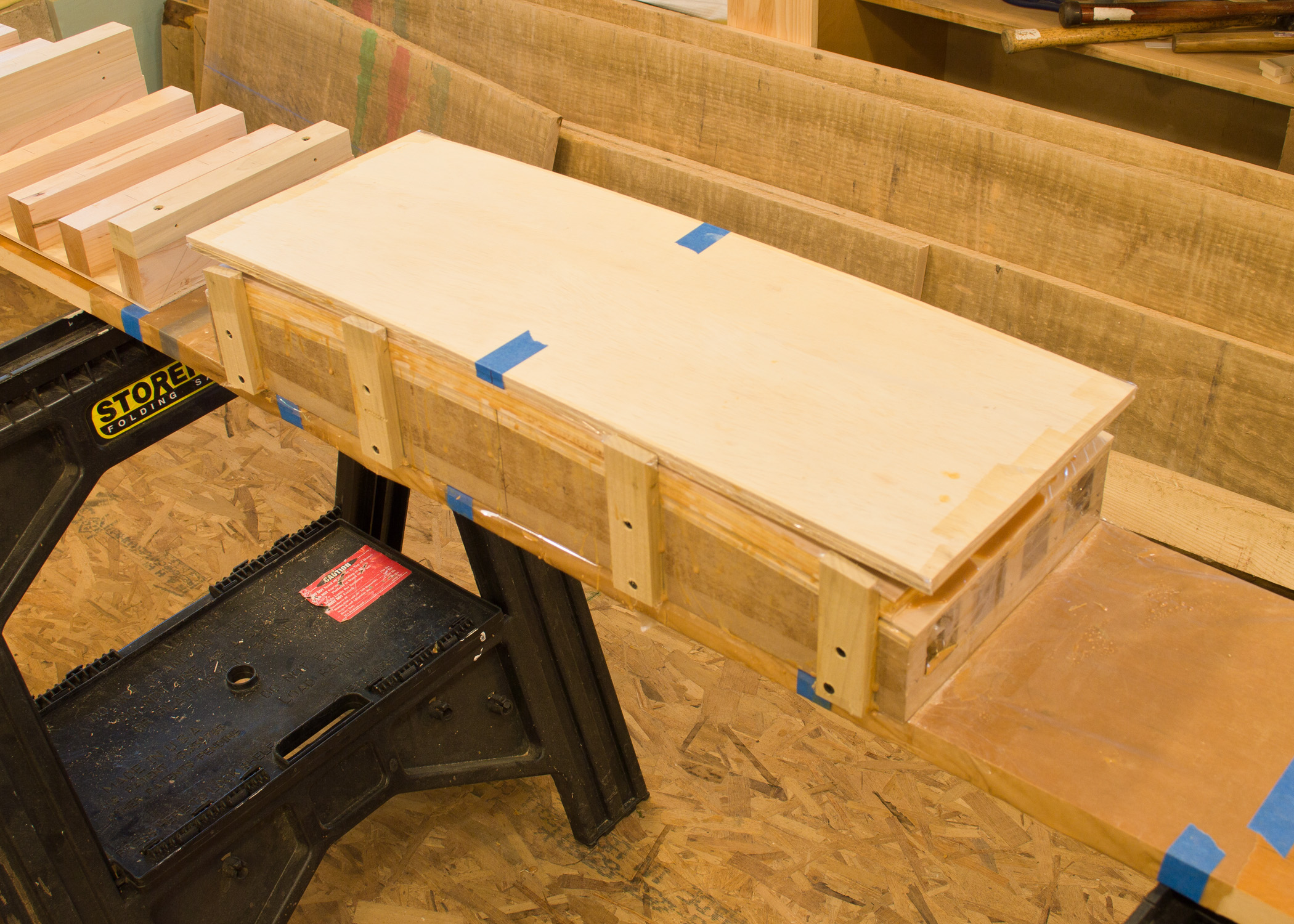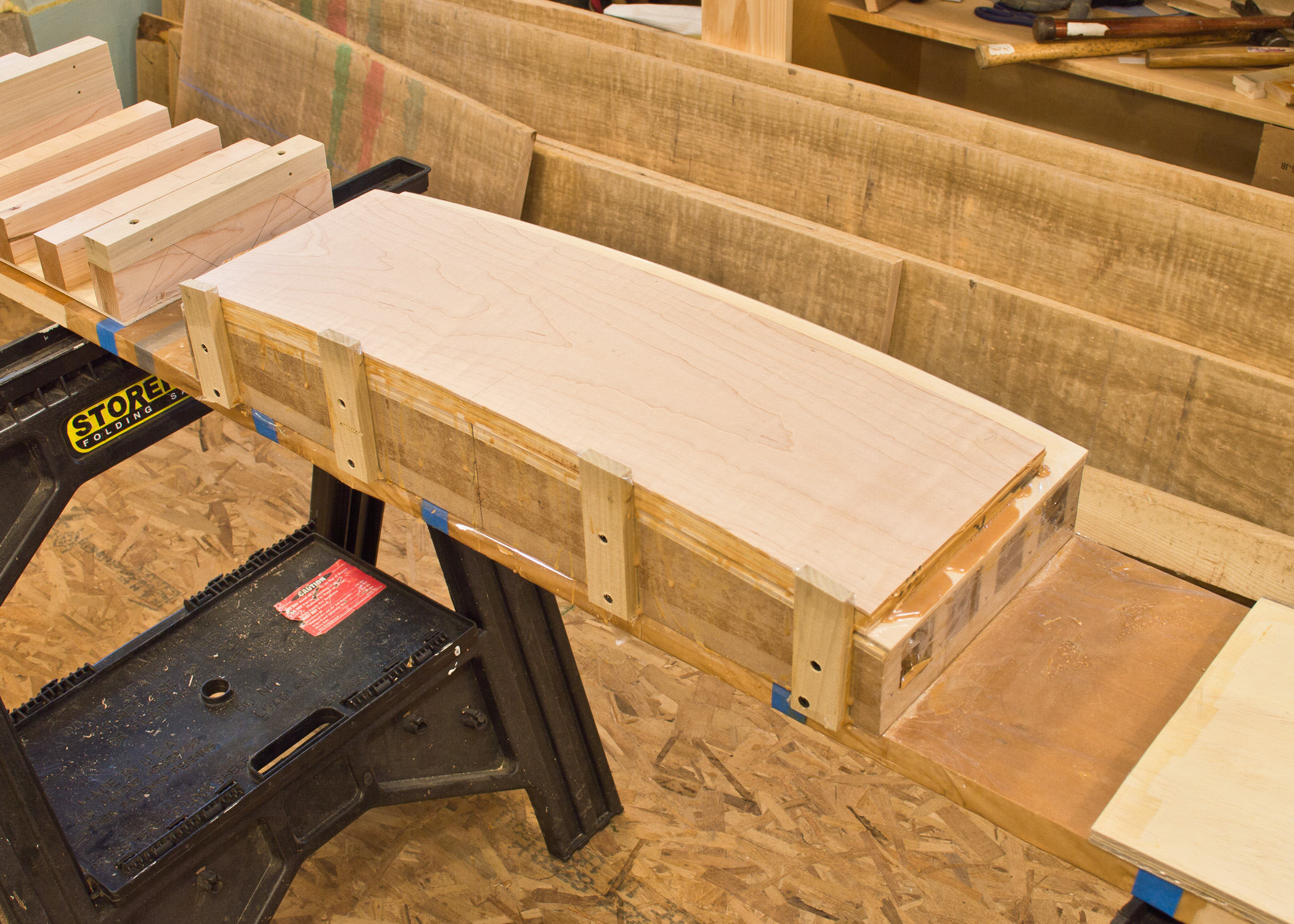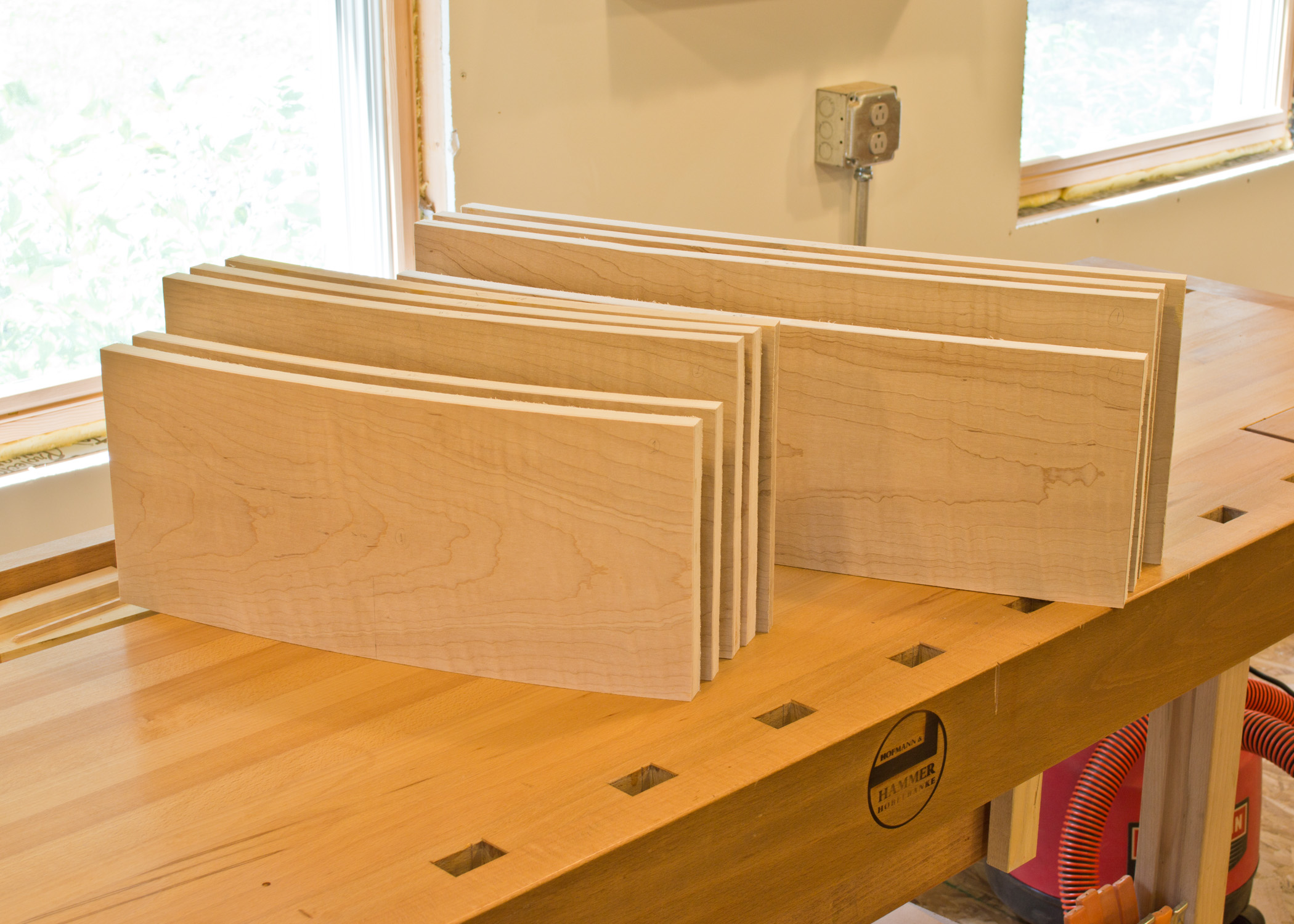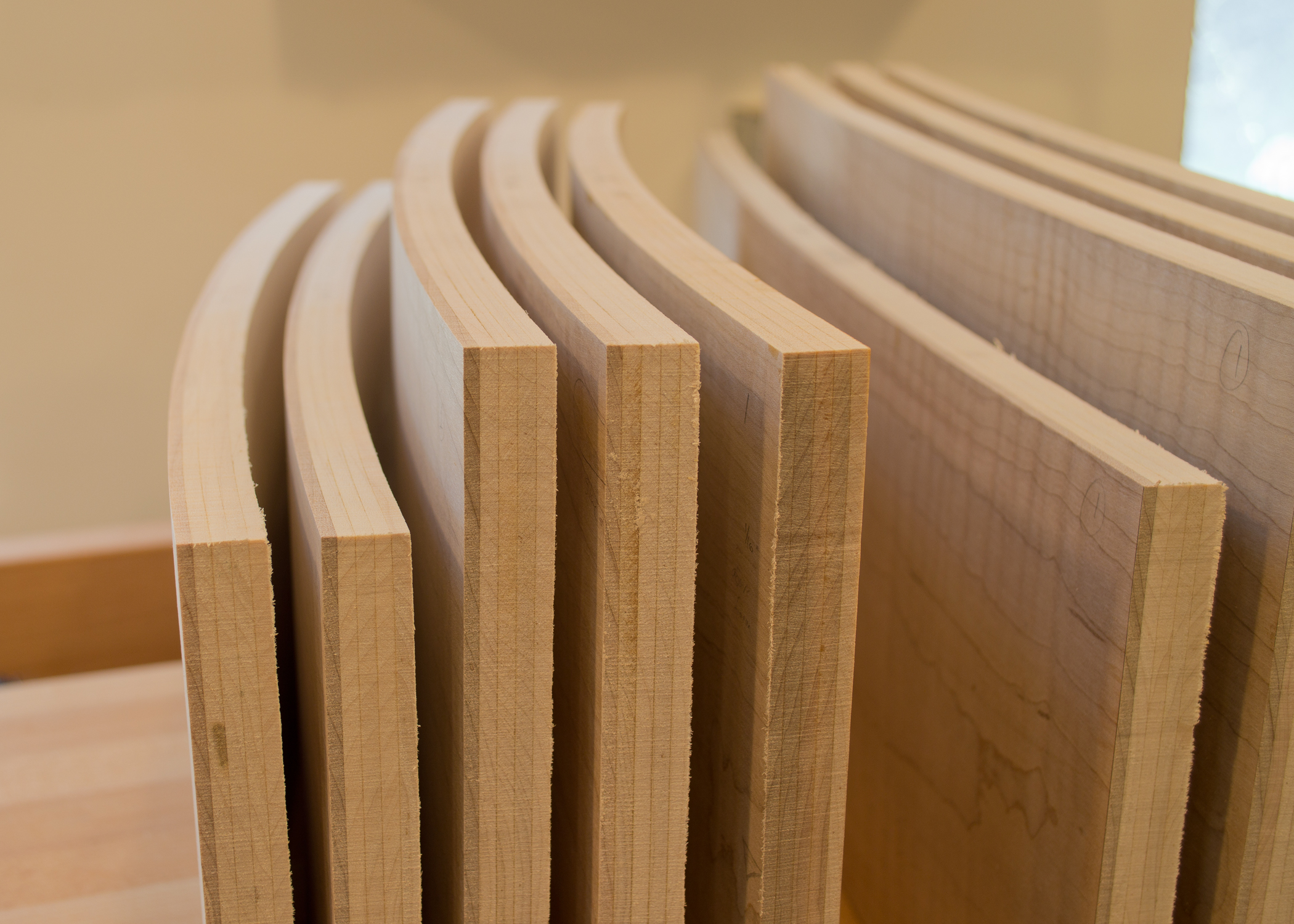
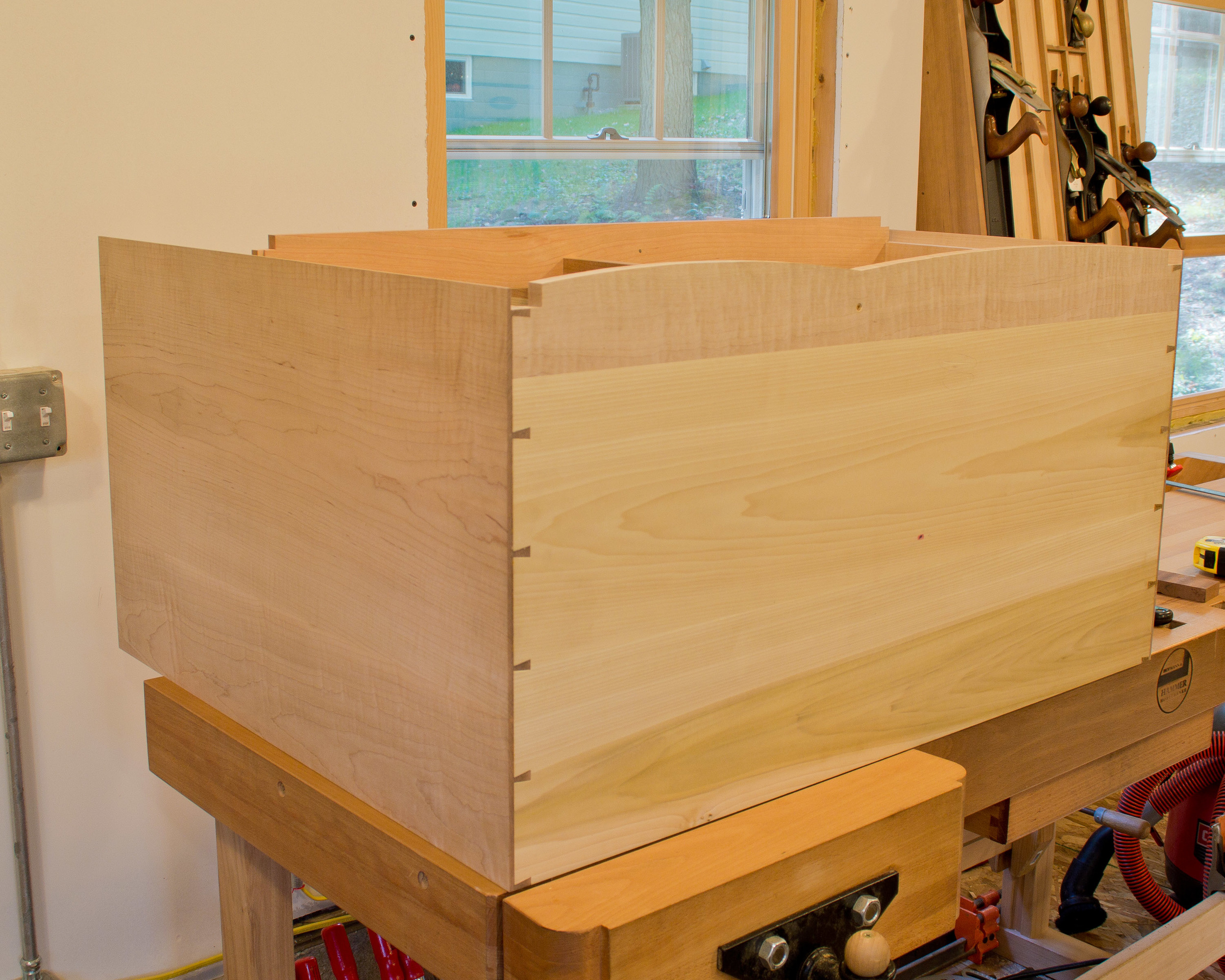
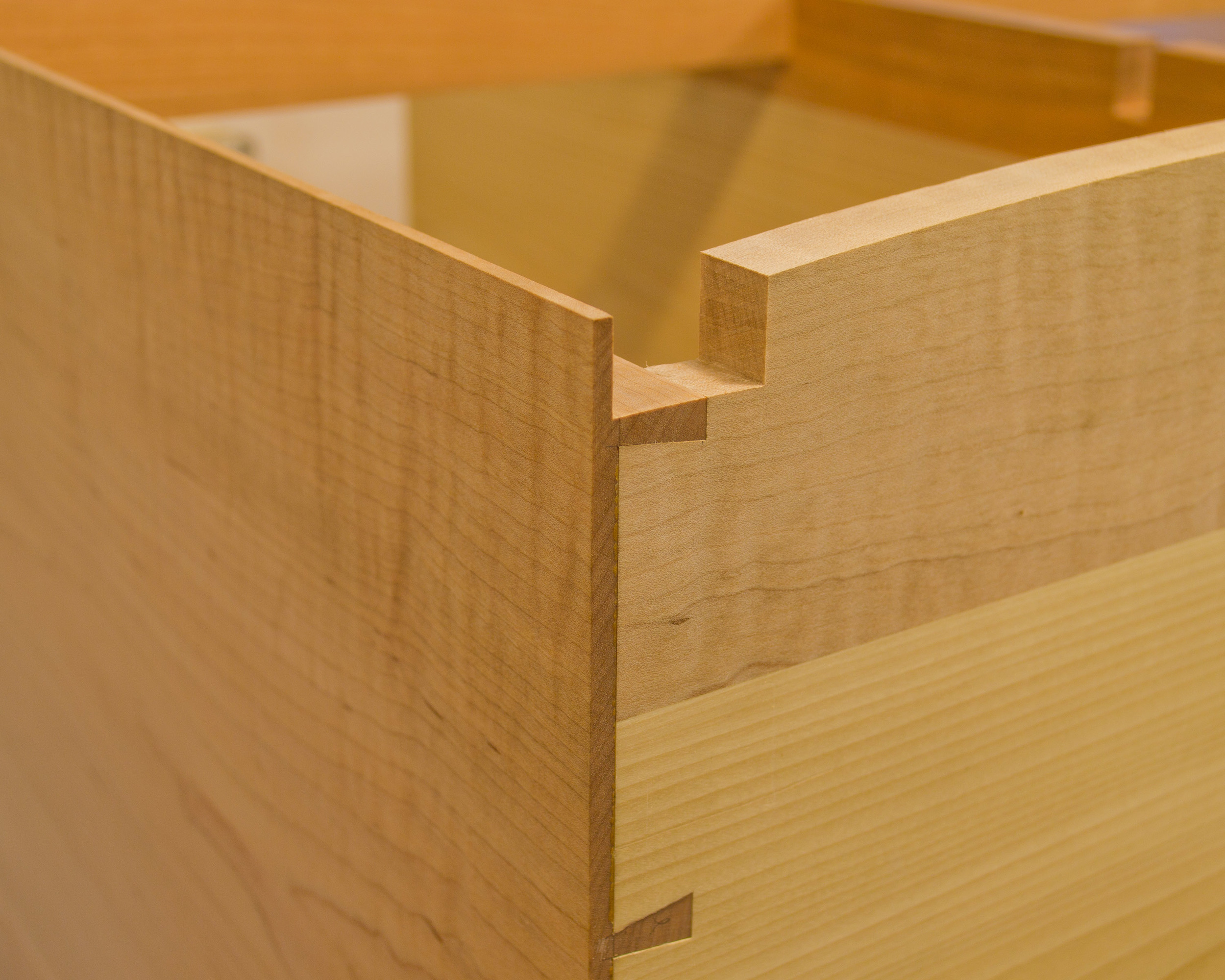

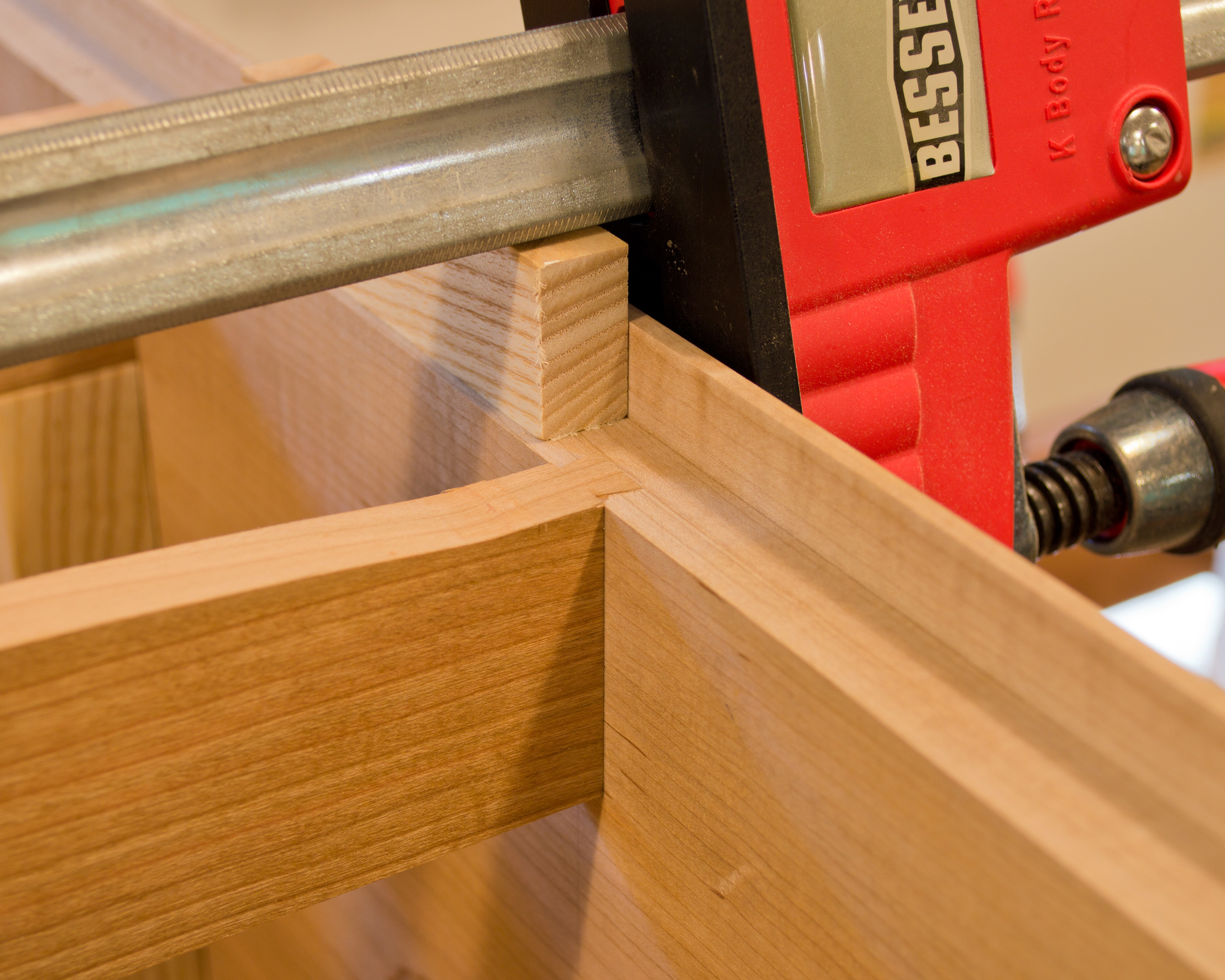
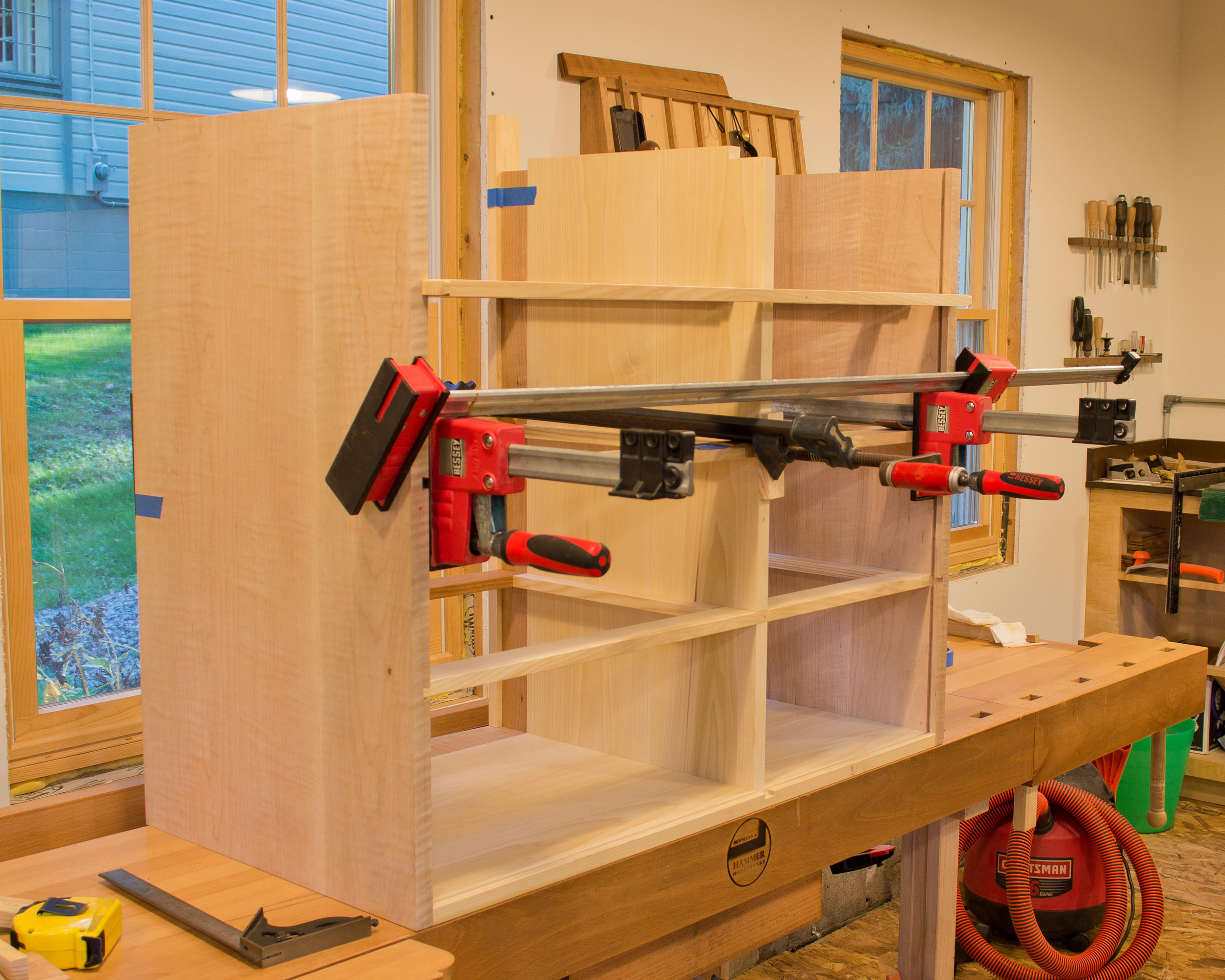
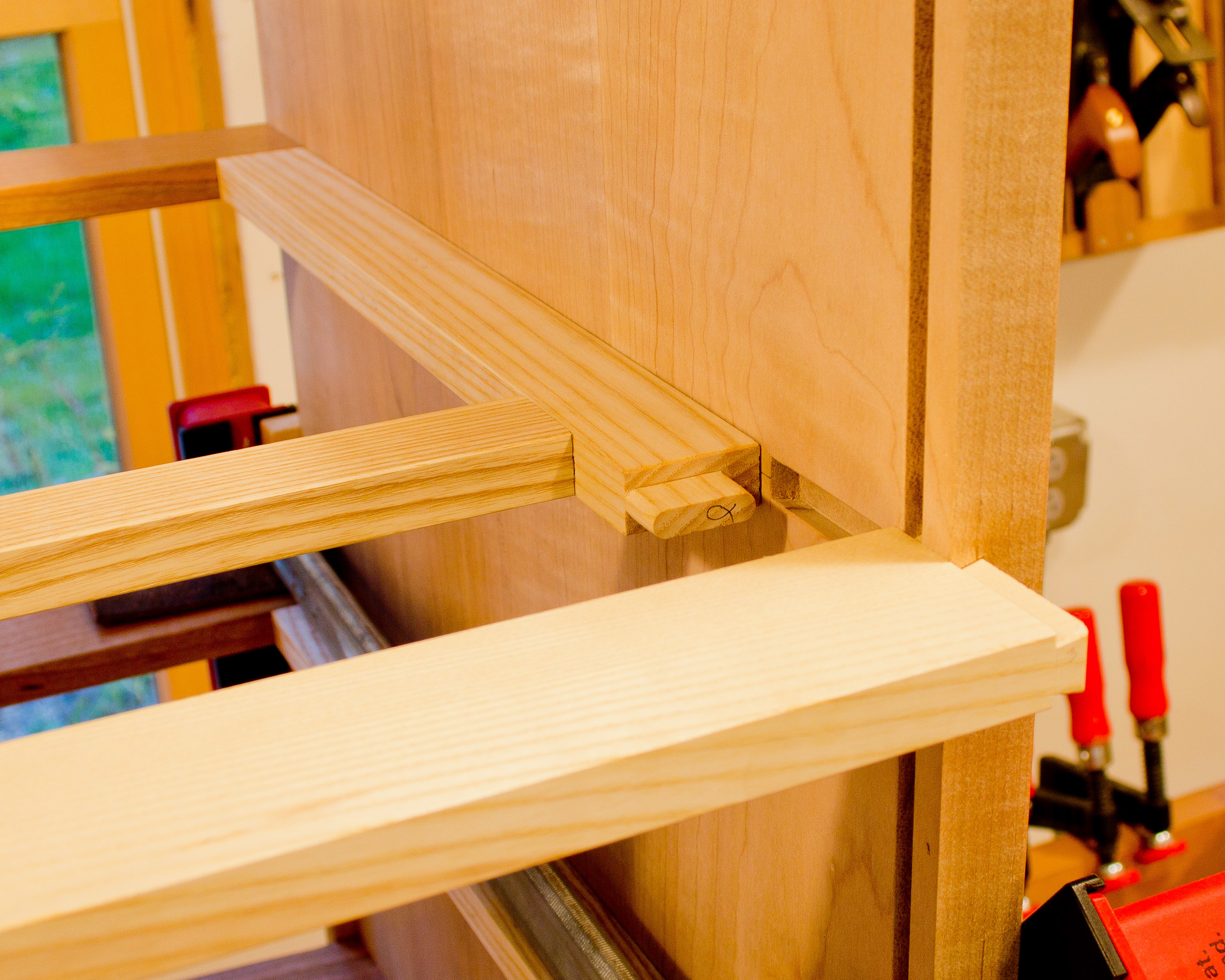
The chest of drawers is starting to take shape as I begin to take the individual parts and assemble them to create the case. Up until now each part represented a lot of work – milling, sizing to dimension, joinery, more joinery, smoothing, fitting – but hadn’t yet been assembled into something recognizable.
I always design and build case pieces with wood-to-wood joinery, and this piece is no exception. The sides join to the bottom with hand cut, half-blind dovetails. The off-center vertical divider joins to the bottom with a tapered sliding dovetail. Horizontal dividers join to the case sides with sliding dovetails and to the vertical divider with half-laps. The benefit of all of this tight-fitting joinery is a case that will be more than adequate to resist the loads it will see over the span of its life – no bowed sides or sagging dividers. And that’s extremely important because a case that is not rigid will lead to drawers that don’t slide in and out sweetly. And what’s the point in a chest of drawers you can’t use?
